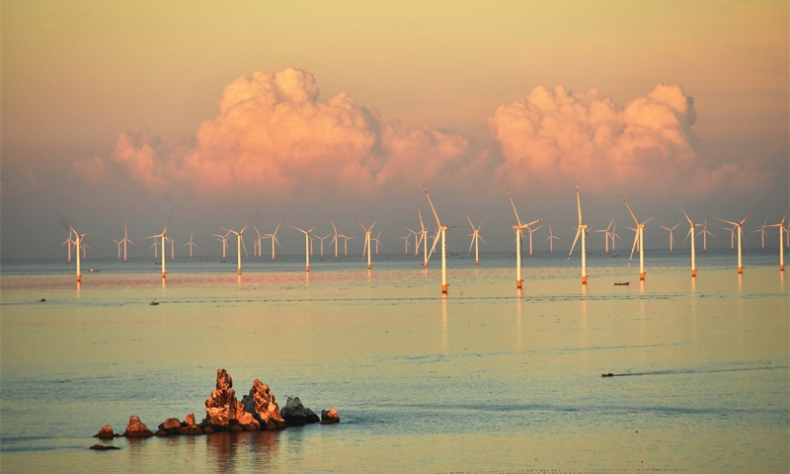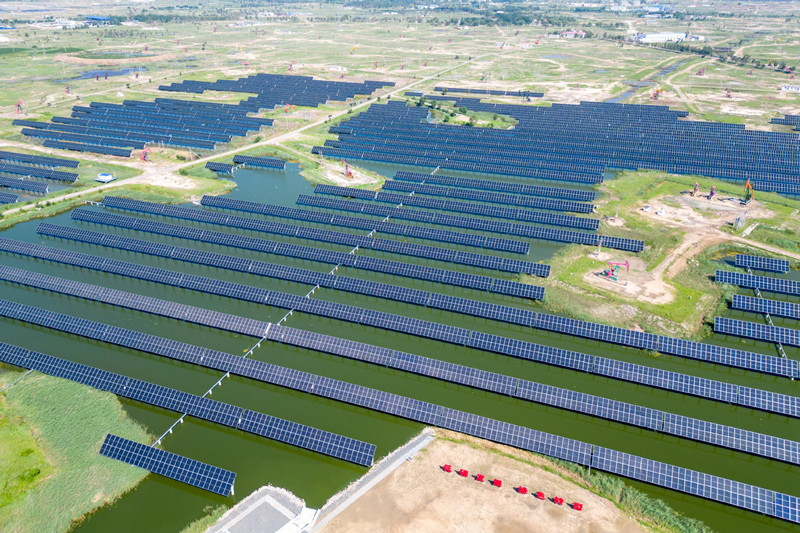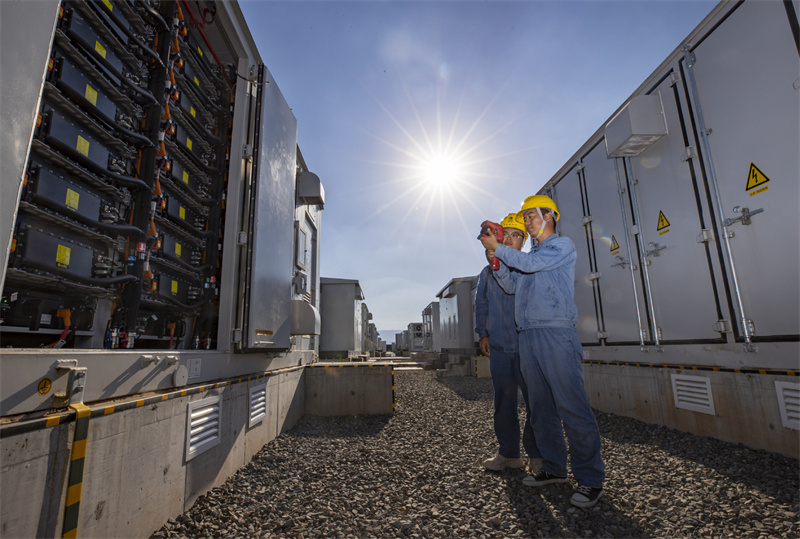China’s Leadership in Renewable Energy

China’s recent efforts have contributed to optimism that the tricky energy transition does not need to come at the expense of energy security.
China’s development of renewable energy continues to break records, and this is a good thing for coping with climate change. Recent data shows that China has added 128 gigawatts (GW) of solar and wind power capacity in the first half of 2024. Not only does this put China on track to beat last year’s record level of clean energy installations, but it also means that, for the first time, installed wind and solar power capacity has surpassed its coal power capacity.
China had a total of 1,180 GW of wind and solar power capacity by the end of June, accounting for 38.4 percent of its total power-generating capacity, according to the China Electricity Council (CEC). The rapid rollout has meant that installed coal power generating capacity is now a smaller share of the overall power sector capacity than solar and wind.
In some provinces, coal power acts as backup capacity when water levels are low in China’s major dams across its southwest regions.
The role of coal acting as backup, rather than the ‘baseload’, for China’s power sector, is now spreading nationwide as renewable energy picks up more and more of the load. This brings new challenges, not least of which is how to ensure that enough of the existing coal power plants are able to stay financially viable, despite generating less power than they have in the past.
Last November, China’s central government introduced a policy under which coal power plants receive a fixed payment based on their capacity, instead of only being paid for the electricity they generate. This “capacity-compensation mechanism” aims in part to help the coal sector transition towards providing backup for various renewable energy, rather than being the main source of electricity.
A crucial aspect of the energy transition is a rapid increase in the utilization of renewable energy, and China is clearly leading the way. Power generation from wind and solar grew by 171 TWh in the first half of the year, more than the total power output of the UK in the same period. As a result, according to estimates, China’s CO2 emissions fell by 1 percent in the second quarter of 2024, the first quarterly fall since the end of the Covid pandemic. The fall was driven by the surge in clean energy additions, which is driving fossil fuel power into reverse.

China’s recent efforts have contributed to optimism that the tricky energy transition does not need to come at the expense of energy security. This is an important learning for many developing countries, particularly in Asia and Africa, which corresponds well with China’s ambitions for greening the Belt and Road Initiative.
The need for international cooperation remains, particularly given that the energy transition requires not just building new capacity, but also managing power generation in a system-based manner. From an overall systems perspective, it is important to transition the power sector as efficiently as possible.
A good example of international cooperation in this area is the EU-China Energy Cooperation Platform (ECECP), which was launched in May 2019. The overall objective of ECECP is to increase mutual trust and understanding between the EU and China and contribute to a global transition towards clean energy on the basis of a common vision of a sustainable, reliable and secure energy system.
Importantly, China’s progress on climate policy continues. In late July, China’s State Council published a work plan for accelerating the establishment of a dual control system for carbon emissions. “Dual control” refers to the control of both amount and intensity of carbon emissions. The plan clarifies the timeline for China to start regulating carbon emissions domestically and to adopt absolute emissions targets.
The plan is that the 15th five-year plan will make carbon intensity targets binding in the 2026-30 period. There will be a non-binding, “supplementary” target for absolute emissions level in 2030. Then in the following five-year periods, there will be a binding absolute emissions target.
The plan will require a detailed system of carbon emissions accounting at the level of local government, industrial sectors and firms. As with similar efforts internationally, this step will in itself provide a profound incentive to identify and realize emission reduction opportunities throughout the economy.
Then, just last week, the Central Committee of the CPC and the State Council jointly published a “guideline” on accelerating the green transformation of economic and social development. There are several important signals from this high-level document, including an intention to accelerate clean energy bases and actively develop distributed solar, as well as encouraging improvements and reforms to management of the power grid, including more energy storage to integration of clean energy.

Storage is a key part of the solution to what’s known as the “energy trilemma”, i.e. the challenge of simultaneously meeting sustainability, security and competitiveness goals in the energy sector. Storage refers to technologies that can store energy and then supply it back to the grid at a more advantageous time – for example, at night, when no solar power is available, or during a weather event that disrupts electricity generation. Pumped-storage hydropower, where water is pumped into a reservoir and then released when energy is needed, is widely used, including in China. Batteries are now playing a growing role as they can be installed anywhere in a wide range of capacities.
The Chinese government recently announced that the country’s installed capacity of pumped storage hydropower will exceed 120GW in 2030. It has also raised its target for battery storage capacity to 40GW in 2025, from a previous goal of 30 gigawatts. These efforts have the potential to play a crucial role in demonstrating how large and growing power demand can be met reliably, even while power systems are undergoing their most significant transition since the Industrial Revolution.
China also emphasized the commitment to gradually reduce coal consumption during the 2026-30 period, implying that coal consumption will likely peak soon. The document states clearly that the government will “contain the blind expansion of high-energy consumption, high-emissions, low-quality projects”. It sends an important signal throughout China, that the central government’s priority remains focused on quality growth, not growth at any cost.
China’s progress on renewable energy represents a major contribution to the transition globally, and especially to developing countries. China has so far built the world’s largest, most complete and competitive clean energy industry chain. Going forward, the more that major producers and consumers of energy cooperate and coordinate in policy and technology solutions, the cheaper and more reliable the transition will be. This in turn will bring both environmental and economic benefits to regular people, not just in China but globally.
The author is climate and energy specialist at the environmental law organization ClientEarth.
The article reflects the author’s opinions, and not necessarily the views of China Focus.
 Facebook
Facebook
 Twitter
Twitter
 Linkedin
Linkedin
 Google +
Google +










